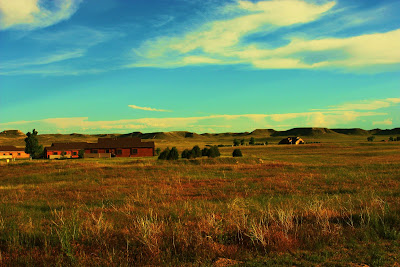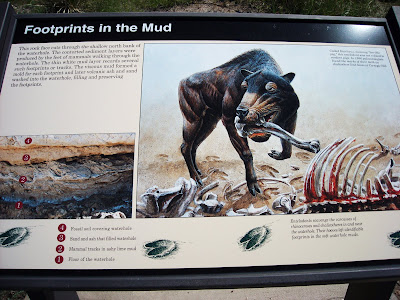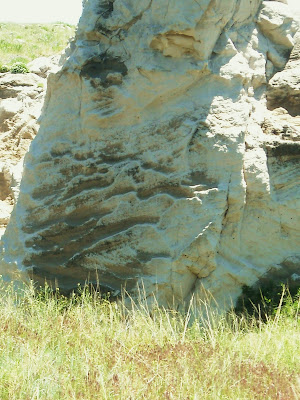Romance brought me out here. Yep- I admit it. And since I've been here I have become more and more romanced by the Beauty All Around Me...
Stones. They dominate the scene here. In fact- they turned themselves inside out- to create the world. With Super Powers such as this, how could I not be swept off of my feet by them?
There is a special rock that continues to lure me out here as no other- the Fairburn Agate. When I was still in New Hampshire, it slipped itself on my finger, and it was love at first sight. From then on, I guess I was a goner! No two Fairburn agates are alike, and they continue to amaze and bedazzle me with their beauty and power.
The second one came to me when I had replanted myself in South Dakota, somewhere in Dakota Territory...
Up to this point I had only seen mostly polished Fairburn stones, and not that many of them. But I was determined to find one of my own.
I wandered around here and there, farther and farther afield. One hot summer's day, on my way back after several hours hunting- hot and tired, I saw this rock...sitting in the path. The same path I had just walked earlier! There it was- big as life, as if it had just walked there, and was waiting for the next available bus out of town. How could I have missed it earlier? It was as big as my fist. I was struck by it's beauty, but unsure if that really was a Fairburn. Ha!
I got home and dumped all my findings onto the porch, then jumped into the shower. Dried and jumping into fresh clothes, I was just in time as JhonDuane came up the porch steps. By the time I got to the door, he was already checking out my rocks. Before I had time to say anything, he picked up the potato-sized rock and raced to the kitchen to wash it.
"Aw, you don't want this old prairie agate do you?" he said, an odd lilt to his voice.
By this I already knew what it was.
Since then I cannot help but heed the siren's song of this ancient Fairburn agate. I go out to seek it at every chance available.
There are many places to search for Fairburn agates. I will not take the time to share this as there are many other sites more knowledgeable than this little blog regarding Fairburn agate beds. The reader has only to initiate a Google search to find them. It is enough to say that I have spent many happy hours in some of the most beautiful and remote places in Lakota territory hunting them.
Early this summer I tried a new location- in the Black Hills. It was one of the most beautiful places in the 'Hills that I have seen. Because of all the rain, June put on one of the most spectacular displays I have experienced since I have been here. Nature outdid herself! The spot itself is amazing! It is a place of peace and visual splendor.
After an hour or so of hunting in this lovely spot, I had some tiny treasures. No one of these were more than half an inch!


...and some- not as tiny!
By late afternoon it was time to head back to Rapid City, tired, but happy with my finds, and a peaceful heart.
It is no wonder that the Lakota spoke of the Black Hills as a place of sustenance and renewal!





















































































